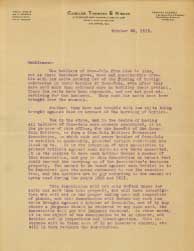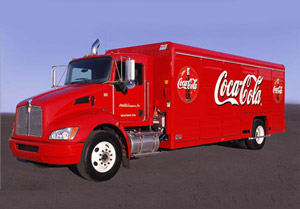Birth of a System – How CCBA was Formed

The initial groundwork for the formation of the Association began in 1913 when several Bottlers encountered claims citing “strange elements” in their Coca-Cola bottles. After comparing the details of the claims, they discovered that other Bottlers nearby had paid the same claimant, and that several claims were nearly identical to one another! The Bottlers began corresponding with each other, only to learn that similar situations of fraudulent claims were occurring frequently in other parts of the country.
In an effort to protect themselves from these risks, the Bottlers sought to purchase insurance, discovering that a policy to address claims against their product didn’t exist. After correspondence and conversations with Harold Hirsch, General Counsel for The Coca-Cola Company and a pioneer in product trademark protection, a group of 64 Bottlers of Coca-Cola met and formed The Coca-Cola Bottlers’ Protective Association in Mr. Hirsch’s office on October 28, 1913.
Membership grew rapidly and Members explored initiatives to offer mutual benefits across their businesses, hiring noted experts to create bulletins on science-based subjects related to production quality. Informative materials with the latest industry facts to support best practices were a hallmark of the Association from its earliest days.
CCBA also played a prominent role in promoting and establishing the universal use of the contour bottle with its members. At its Annual Meeting in January 1916, the Bottlers adopted the standardized contour bottle, and began to apply color standards for wagons, automobiles, crates and bottling plants to be consistent with Brand Coca-Cola.
Milestones through the Decades
CCBA Historical Time-line
| 1913 – 1919 | Association established; first Product Liability Policy; contour bottle developed and patented; creation and advancement of other operating and sales standards in the manufacturing of Coca-Cola. |
| 1920s | Members added; committees formed; state councils organized; bottle volume of Coca-Cola exceeds soda fountains. |
| 1930s | CCBA incorporates; Board of Governors expanded; Group Insurance Plan introduced; Vending Policy added at no extra cost. |
| 1940s | WWII dominates decade with fewer meetings and less litigation; Central Production School established; Contract Committee formed. |
| 1950s | Time of fierce competition across the industry; introduction of King- and Family-size bottles; a pension plan for Bottlers is established with Providence Life Insurance Company; new committees established. |
| 1960s | Cans introduced; TaB contract adopted; tax-exempt status questioned; outside counsel employed to represent Association; Ralph Beach retires and John Knox becomes the Association’s 2nd Secretary; first issue of The Bottling Line is mailed in June, 1964. |
| 1970s | Introduction of 2 liter PET bottles; non-profit tax exempt status resolved; FTC challenges bottling territorial franchise system; beginning of major bottling contract amendment negotiations; Mello Yello and Mr. Pibb join the portfolio. |
| 1980s | Legislation passed and President Carter signs bill legalizing Bottler territorial franchise system; Diet Coke launched nationally; New Coke introduced and quickly retired; Coca-Cola Scholars Foundation established; Diet Coke touches off new round of bottling contract amendment negotiations. |
| 1990s | Sustainability takes center stage across the system; Dasani and contour PET bottle are launched; renewed focus on competitive cooperative purchasing; Association welcomes Bottlers operating outside U.S. as “Associate” Members; Product Liability and Group Insurance premium reductions continue; Barq’s joins portfolio. |
| 2000s | Historical advances in all aspects of our industry. The highlight is the completion of a system-wide transformation in which CCBA, our Bottling Members and the Company worked together to execute refranchising the Coca-Cola Bottling System, poising it for long term success into the next century. |
|
|
|
CCBA Today
As CCBA moves through its second century of operation, the future clearly holds great challenges, opportunities and promise. Our Bottlers remain core to the success of Coca-Cola, and their contributions to local communities are as relevant today as when the System was formed more than 110 years ago. CCBA remains committed to supporting all Coca-Cola Bottlers, seeking always to help them achieve their business objectives. Together, CCBA and its Members will continue to partner in creating and delivering value and serving the needs of our great consumers, customers and local communities!




